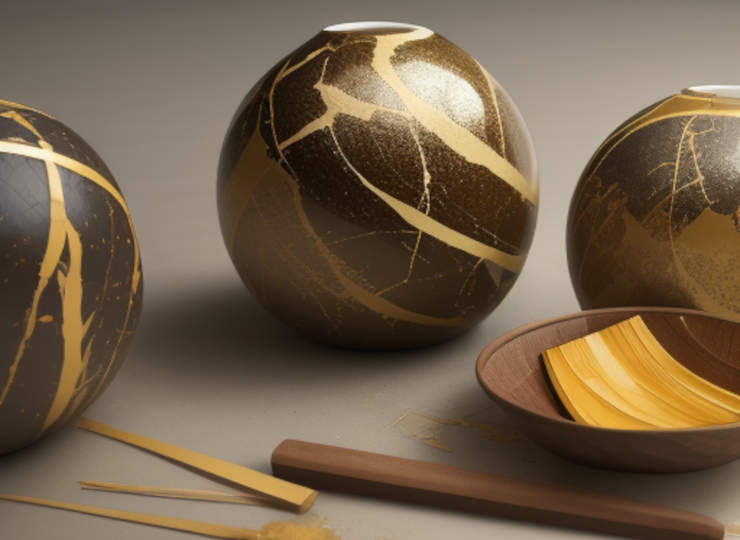文字のサイズ
- 小
- 中
- 大
The appeal of kintsugi, a Japanese tradition
Creating new value in discarded objects through kintsugi

Kintsugi is a technique for repairing damaged parts of ceramics and other objects using lacquer, and is considered one of the traditional Japanese crafts practised since ancient times. In recent years, kintsugi has attracted much attention both at home and abroad from the perspective of ecology and SDGs, and kintsugi by the general public, such as simple kintsugi, has been actively practised.
The kurumi Co., Ltd. is mainly engaged in the kintsugi business and also develops character goods brands, and opened the kintsugi workshop ‘kulukulu’ in front of Nijojo-mae Station on 25 May 2024. At the workshop, they are actively working to make traditional crafts more accessible through the experience of kintsugi (metal-jointing), by holding honjirushi kintsugi classes, simple kintsugi workshops, kintsugi accessory workshops and other workshops. Kintsugi is the process of restoring damaged ceramics, which would normally be discarded, not only to repair the broken object but also to create new value by adding beauty to the process of restoration.
Dai Sasaki, the representative of kurumi Co., Ltd. was interested in art before he started his own business, and came across kintsugi when he was thinking about whether he could develop a business in his home town of Kyoto that would make more people aware of traditional crafts. In researching kintsugi, he learnt that there are full-scale kintsugi and simple kintsugi, and was greatly attracted by the fact that simple kintsugi can be done easily by anyone and that it is possible to restore important ceramics and porcelain using kintsugi, transforming them into something special and unique to oneself while utilising the damage.
The materials used in the workshop include smooth to touch stones polished by Kunihiro Sangyo Corporation (Katsuragi City, Nara Prefecture), which manufactures polishing materials, power stones with various effects, and American and French-made materials from Jiku Art Creation (Minoh City, Osaka Prefecture). The materials are carefully selected, such as stained-glass scraps from Jiku Art Creation (Minoo City, Osaka). The process of applying gold as a finishing touch gives the work a depth and shine that cannot be imagined until halfway through, and makes you feel more attached to your own work. Traditional lacquer restoration usually takes around two to three months, but the simple kintsugi technique makes it possible for anyone to produce the work easily.
The collaborative workshop targets fashion-conscious and trend-conscious women who frequent the café, and hopes to provide a place where they can experience accessories using kintsugi, which is becoming popular worldwide, in the relaxed atmosphere of the café space, and come into contact with traditional crafts.






